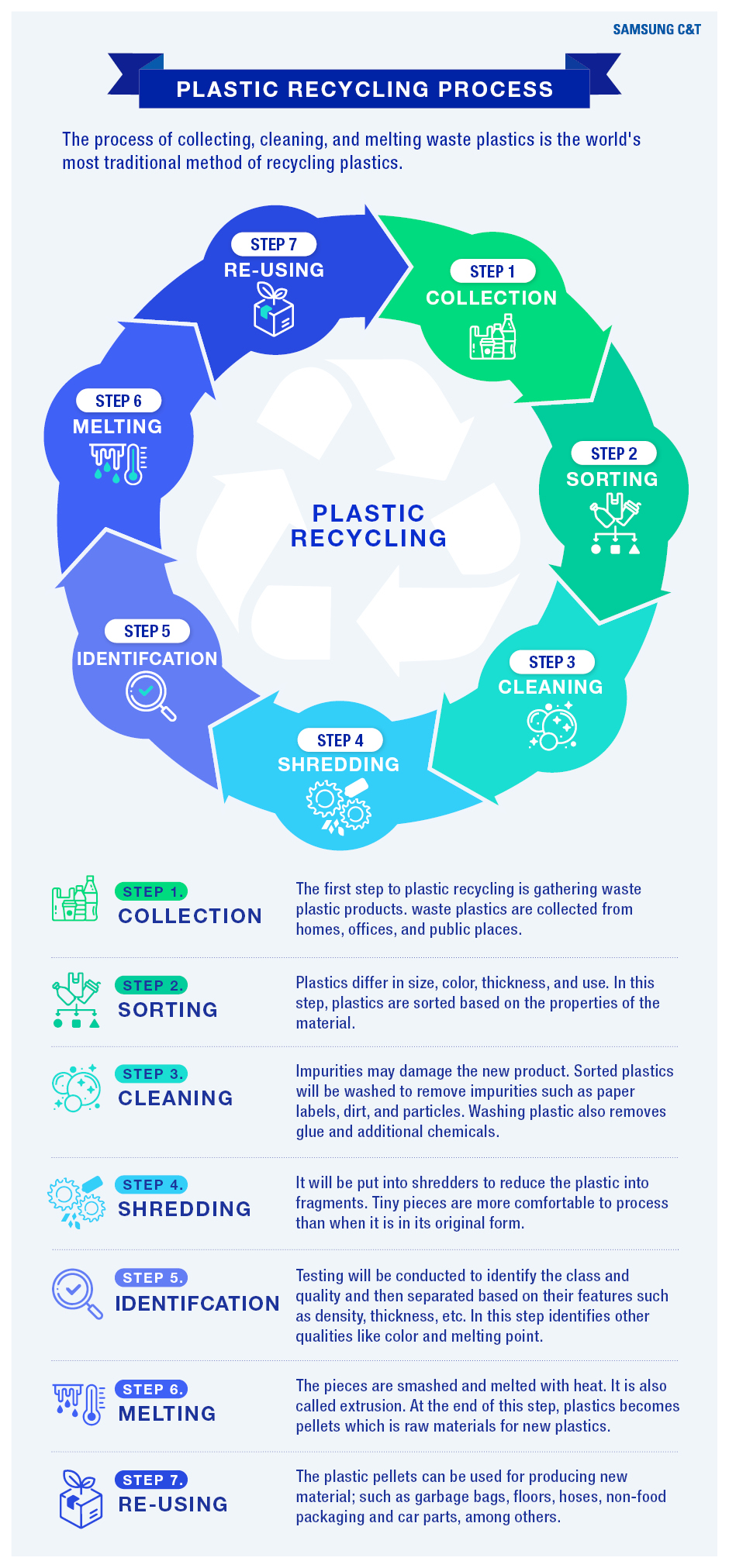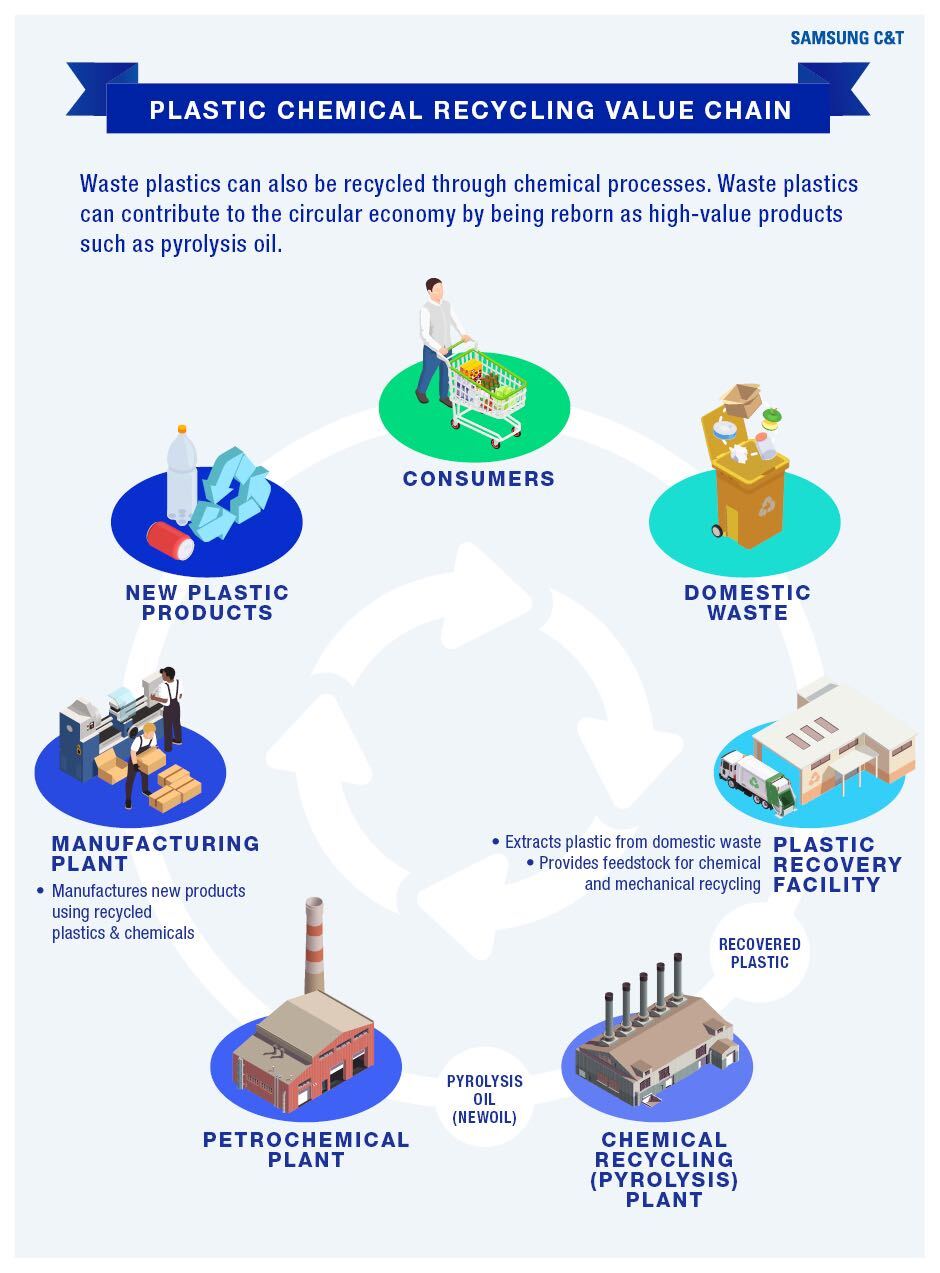
Plastic waste has risen during the pandemic due to increased demand for single-use plastics. In fact, more than eight million tons of pandemic-associated plastic waste have been generated globally, as of last August. Given that as little as nine percent of plastic waste is recycled, most of it gathers in landfills or ends up in natural environments like our oceans.
While there has been a growing global emphasis on reducing demand for single-use plastic products, it is difficult to picture a world without plastic given its advantages in cost, weight, flexibility, and versatility.
Yet there is also hope in the form of plastic recycling, which is developing into a very significant industry.
How is plastic recycled?
First, let’s just clarify that there are various kinds of plastic, which is a broad term describing synthetic or semi-synthetic materials made using polymers.
Commercial products will often display a number showing what kind of plastic they are made from. Generally speaking, numbers 1, 2, 4, and 5 are considered recyclable – they are PET, HDPE, LDPE, and PP – even though recyclable plastic often ends up in landfills.
The traditional plastic recycling steps include collecting, sorting, cleaning, shredding, identifying, melting, and forming plastic pellets that are then ready to use to make new products.
We should mention that newer methods of plastic recycling show promise, including chemical recycling. For instance, a technique called pyrolysis involves turning plastic back into the oil it was made from. A huge benefit here is that it has the potential to turn all kinds of plastic back into oil. Other options include reducing a polymer into a monomer that can be used to make new products, as well as converting plastic to gas to produce energy.
The benefits of a booming industry
The global plastic recycling market was estimated to have reached US$45.5 billion in 2021. It is forecast to grow to $65.3 billion by 2026, increasing at a CAGR of 7.5%.
Recycling plastic even requires less energy, money, and time than starting from scratch, without relying on the use of new fossil fuel feedstock.
Aside from the financial benefits, plastic recycling helps to create a circular economy. We gain a real insight into this through the example of chemical recycling, which is a process that involves turning plastic back into the oil it was made from.
Samsung C&T’s push to protect the environment
Samsung C&T Trading & Investment Group has been pushing for strategic cooperation to promote new eco-friendly projects in the future, such as reviewing projects to build eco-friendly circulatory systems through waste plastic recycling.
For example, a recent memorandum of understanding signed by the company with one of Korea’s largest petroleum and refinery companies seeks to promote new eco-friendly businesses in the future through strategic cooperation. This includes reviewing how to build an eco-friendly circular economy through the recycling of waste plastics and establishing an infrastructure for overseas commercial development of eco-friendly chemical products made from raw materials such as waste plastics. For its part, Samsung C&T aims to harness its global network and overseas business capabilities to discover new customers in developed countries such as the United States and European nations, which are major markets for eco-friendly chemical products.
Meanwhile, the company is continuing efforts to discover new growth engines in promising fields by strengthening its eco-friendly business portfolio. Since declaring in 2020 it would “exit” the coal business, a first for a non-financial company in Korea, Samsung C&T has been strengthening its businesses in eco-friendly fields such as hydrogen, solar power, and secondary battery materials.
Going forward, the company plans to actively make efforts to enhance social contributions and lay the foundation for growth by expanding cooperation with various competent partners and discovering new business opportunities.











